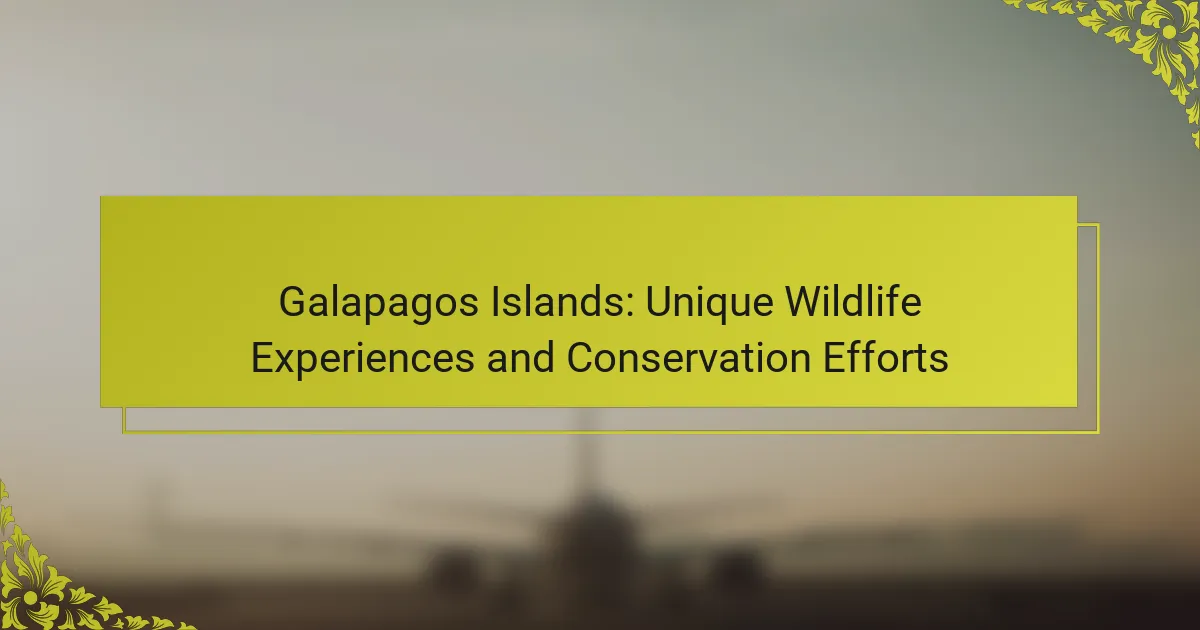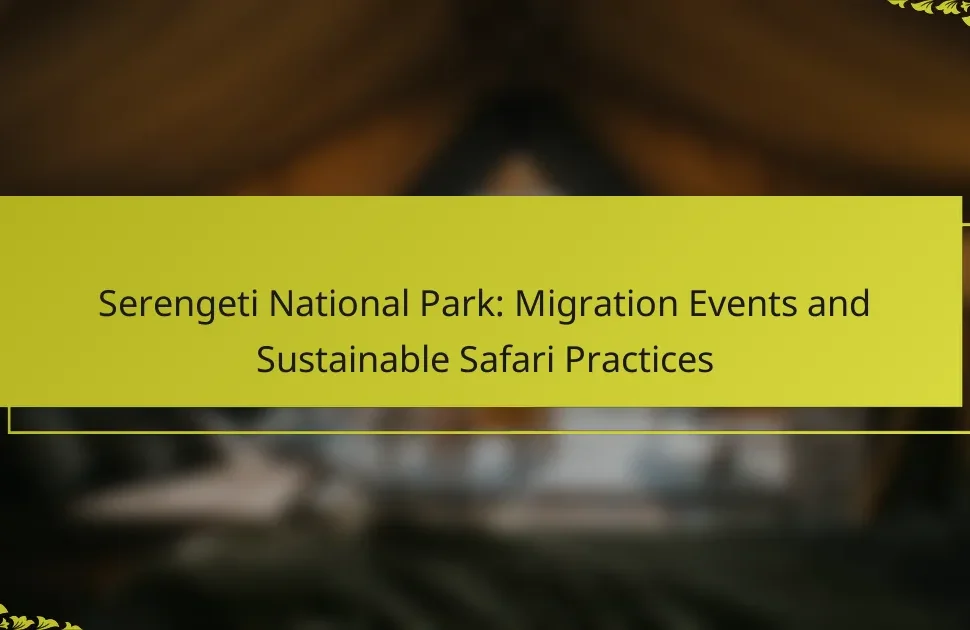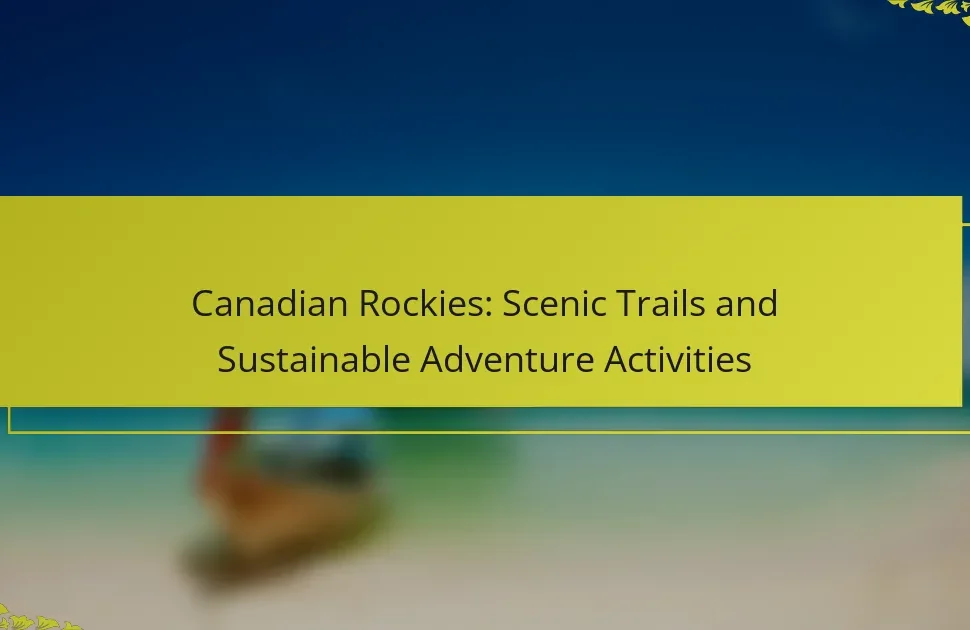The Galapagos Islands offer unparalleled wildlife experiences and critical conservation efforts. Discover guided tours that reveal unique species, snorkeling adventures showcasing vibrant marine life, and wildlife observation that enhances biodiversity appreciation. Learn about conservation initiatives aimed at protecting these ecosystems and the cultural perspectives that shape sustainable practices. Explore the long-term goals for preserving the islands’ extraordinary biodiversity.
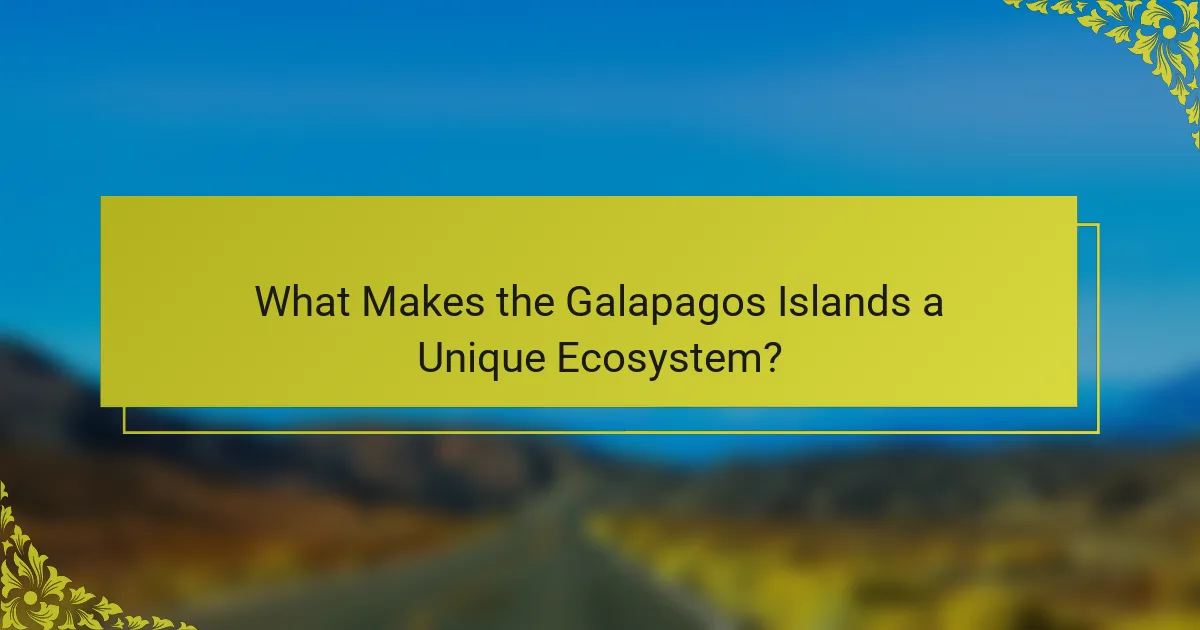
What Makes the Galapagos Islands a Unique Ecosystem?
The Galapagos Islands are unique due to their diverse ecosystems and endemic species. This archipelago features wildlife found nowhere else on Earth, such as the Galapagos tortoise and marine iguana. Conservation efforts focus on protecting these species and their habitats, ensuring the preservation of this extraordinary ecosystem. The islands’ isolation has fostered unique evolutionary processes, making them a living laboratory for scientists.
How Do the Islands’ Geological Features Influence Biodiversity?
The geological features of the Galapagos Islands significantly enhance biodiversity by creating diverse habitats. Volcanic activity has formed varied landscapes, including mountains, lava fields, and beaches, each supporting unique ecosystems. These distinct environments allow species to adapt and evolve in isolation, leading to high levels of endemism. For instance, the islands are home to over 30% of species found nowhere else on Earth, such as the Galapagos tortoise. The combination of isolation and varied terrain fosters a rich tapestry of life, making conservation efforts crucial to maintaining this biodiversity.
Which Species Are Endemic to the Galapagos Islands?
The Galapagos Islands are home to several endemic species, including the Galapagos tortoise, marine iguana, and Darwin’s finches. These species have adapted uniquely to the islands’ environments. The Galapagos tortoise can weigh over 400 pounds and live for more than 100 years. The marine iguana is the only lizard that swims in the ocean, while Darwin’s finches showcase diverse beak shapes adapted for different food sources. Conservation efforts are crucial for protecting these unique species from threats like invasive species and climate change.
What Role Does Isolation Play in Species Development?
Isolation significantly influences species development by promoting unique adaptations. In the Galapagos Islands, geographical isolation has led to the evolution of distinct wildlife, such as the Galapagos tortoise and finches. These species exhibit unique traits that enable them to thrive in their specific environments. The islands’ conservation efforts aim to protect these unique adaptations and biodiversity.
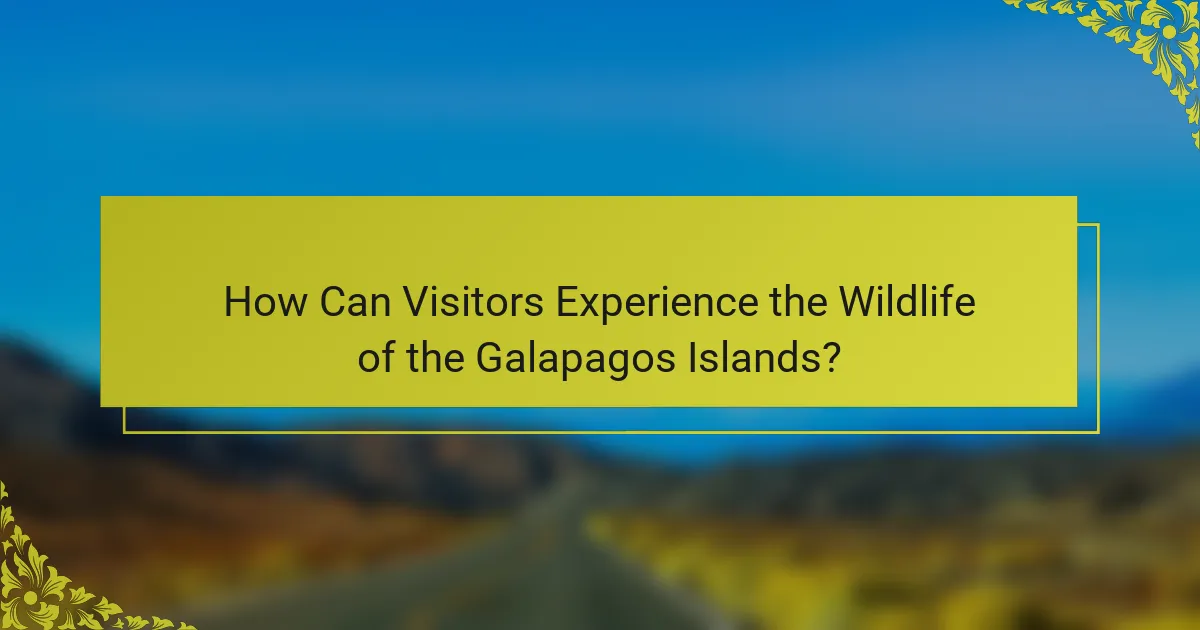
How Can Visitors Experience the Wildlife of the Galapagos Islands?
Visitors can experience the wildlife of the Galapagos Islands through guided tours, snorkeling, and wildlife observation. These activities allow for close encounters with unique species like giant tortoises and marine iguanas.
1. Guided Tours: Expert-led excursions provide insights into the islands’ ecosystems and conservation efforts.
2. Snorkeling: Explore underwater habitats to see diverse marine life, including colorful fish and sea turtles.
3. Wildlife Observation: Spot endemic species in their natural habitats, enhancing appreciation for biodiversity.
4. Conservation Programs: Participate in initiatives that protect wildlife and their environments, fostering sustainable tourism.
These experiences not only highlight the islands’ unique wildlife but also promote awareness of conservation challenges.
What Are the Best Activities for Wildlife Viewing?
The best activities for wildlife viewing in the Galapagos Islands include guided tours, snorkeling, and hiking. These activities offer unique opportunities to observe endemic species in their natural habitats.
Guided tours provide expert insights into the islands’ ecosystems and wildlife conservation efforts. Snorkeling allows close encounters with marine life, including sea turtles and colorful fish. Hiking leads to breathtaking views and chances to see land iguanas and giant tortoises.
Additionally, birdwatching is a highlight, with over 50 species, including the famous blue-footed booby. Kayaking offers a different perspective, enabling sightings of seals and coastal birds. Each activity enhances the experience of the Galapagos’ unique biodiversity.
How Do Guided Tours Enhance Wildlife Experiences?
Guided tours significantly enhance wildlife experiences in the Galapagos Islands by providing expert knowledge and ensuring safety. Tour guides offer insights into unique species, such as the Galapagos tortoise and marine iguanas, enriching visitors’ understanding. They also promote conservation efforts, educating tourists on the importance of protecting fragile ecosystems. Guided tours facilitate responsible wildlife interactions, minimizing human impact while maximizing enjoyment and education.
Which Locations Are Must-Visit for Animal Encounters?
The Galapagos Islands are a must-visit for unique wildlife encounters. Home to diverse species such as giant tortoises and marine iguanas, these islands offer unparalleled opportunities for observing animals in their natural habitats. Conservation efforts in the region focus on protecting these endemic species and their ecosystems, making visits not only memorable but also impactful. Travelers can engage in guided tours that emphasize education and preservation, ensuring a responsible experience while appreciating the islands’ rich biodiversity.
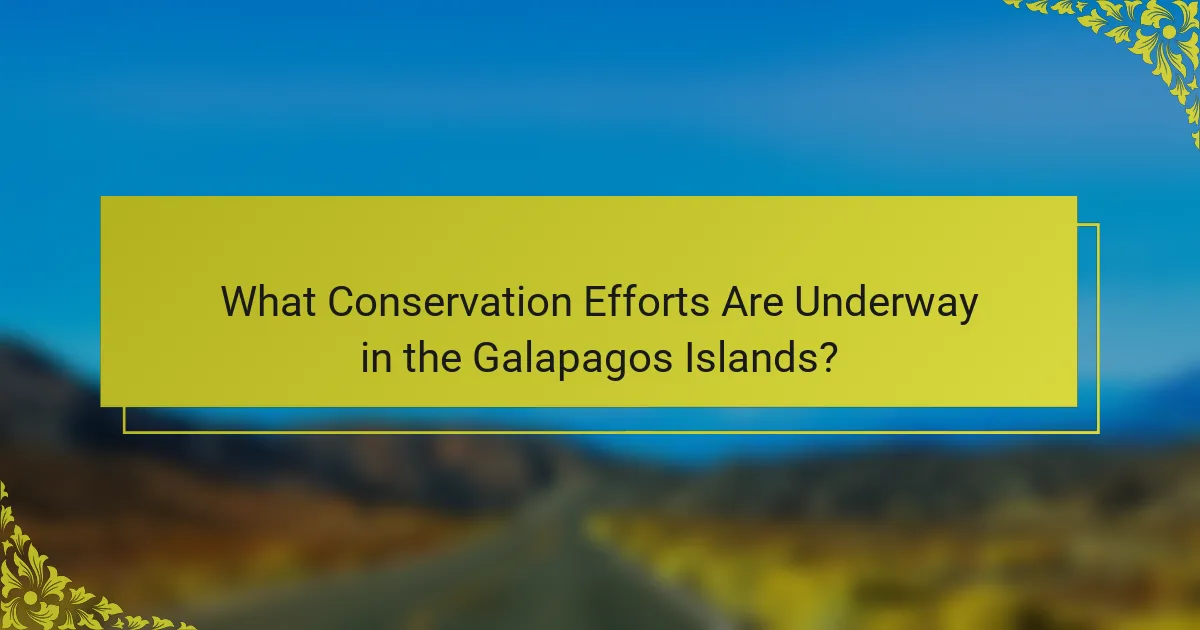
What Conservation Efforts Are Underway in the Galapagos Islands?
Conservation efforts in the Galapagos Islands focus on protecting unique wildlife and ecosystems. Key initiatives include habitat restoration, invasive species management, and marine conservation programs. The Galapagos National Park and the Galapagos Marine Reserve are central to these efforts, safeguarding diverse species like the Galapagos tortoise and marine iguanas. Collaborative programs with local communities enhance sustainable tourism and promote environmental education, ensuring long-term preservation of this UNESCO World Heritage site.
How Do Local Organizations Contribute to Conservation?
Local organizations significantly enhance conservation efforts in the Galapagos Islands by promoting sustainable practices and protecting unique wildlife. They engage in habitat restoration, community education, and collaboration with government and international bodies. For instance, organizations like the Galapagos Conservancy focus on invasive species management and the protection of endangered species, such as the Galapagos tortoise. Their initiatives often include local community involvement, ensuring that conservation efforts are culturally relevant and economically beneficial. This approach fosters a deeper connection between residents and their environment, ultimately leading to more effective conservation outcomes.
What Challenges Does Wildlife Conservation Face in the Islands?
Wildlife conservation in the Galapagos Islands faces significant challenges. Invasive species threaten native wildlife, disrupting ecosystems and endangering endemic species. Climate change impacts habitats and species distribution, exacerbating existing vulnerabilities. Human activities, including tourism and fishing, further strain resources and habitats. Conservation efforts must address these multifaceted issues to protect the islands’ unique biodiversity.
Which Success Stories Highlight Effective Conservation Strategies?
The Galapagos Islands showcase effective conservation strategies through successful initiatives. Notable success stories include the eradication of invasive species, which has allowed native wildlife to thrive. The establishment of marine reserves has led to a significant increase in fish populations. Community engagement in conservation efforts has strengthened local stewardship, fostering sustainable tourism. These strategies collectively enhance biodiversity and protect the unique ecosystems of the Galapagos.
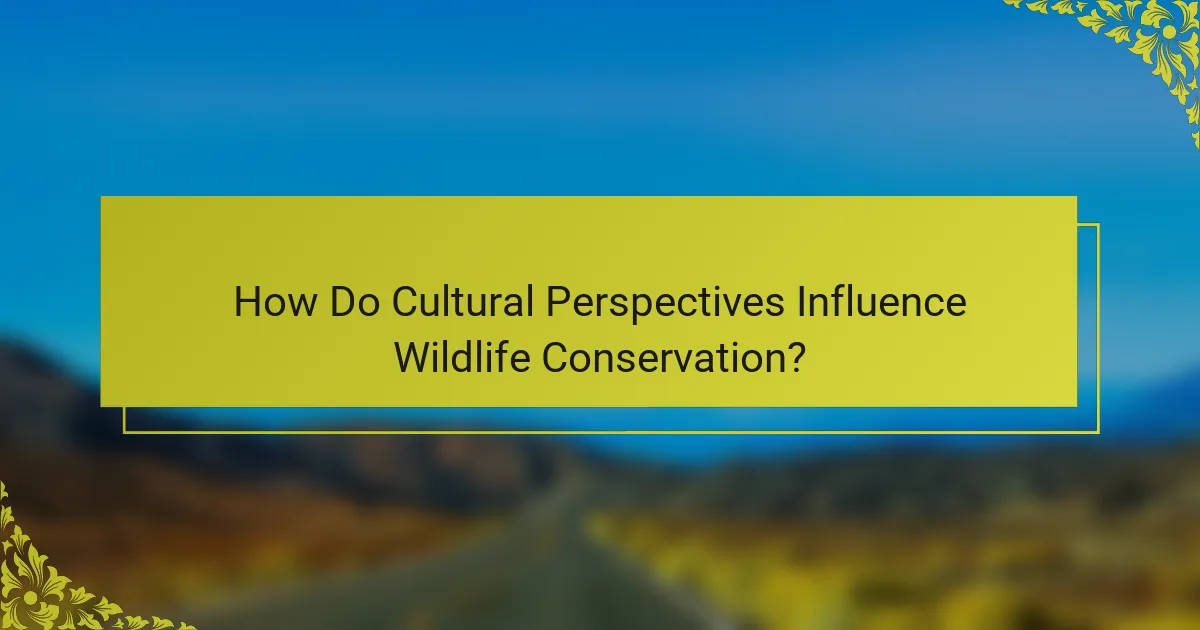
How Do Cultural Perspectives Influence Wildlife Conservation?
Cultural perspectives significantly influence wildlife conservation efforts in the Galapagos Islands by shaping attitudes and practices. Local communities emphasize sustainable practices rooted in their traditions, fostering a deep connection to the unique wildlife. For instance, indigenous beliefs often prioritize the protection of specific species, guiding conservation strategies. Additionally, global cultural perspectives can drive funding and international support, enhancing conservation initiatives. The interplay between local customs and broader cultural values creates a dynamic approach to preserving the Galapagos’ biodiversity.
What Role Do Local Communities Play in Conservation Efforts?
Local communities play a vital role in conservation efforts in the Galapagos Islands. Their involvement ensures sustainable practices and fosters a sense of stewardship for unique wildlife.
Community-led initiatives often focus on education, promoting awareness about the importance of biodiversity. For example, local workshops teach residents and visitors about the fragile ecosystems and endemic species.
Additionally, local communities actively participate in monitoring and protecting habitats. They collaborate with conservation organizations to implement effective management strategies. This partnership enhances the impact of conservation efforts, as locals possess valuable knowledge about their environment.
Moreover, community engagement in ecotourism supports both conservation and economic development. By offering unique wildlife experiences, local residents can generate income while promoting the preservation of their natural heritage.
How Is Conservation Education Integrated into Tourism?
Conservation education is integrated into tourism in the Galapagos Islands through programs that emphasize sustainable practices and wildlife protection. Tour operators often include educational components, such as guided tours that highlight the unique ecosystems and conservation efforts. These initiatives foster awareness and responsibility among visitors, encouraging them to support local conservation projects. As a result, tourism becomes a tool for funding and promoting preservation efforts, ensuring the islands’ biodiversity remains intact for future generations.
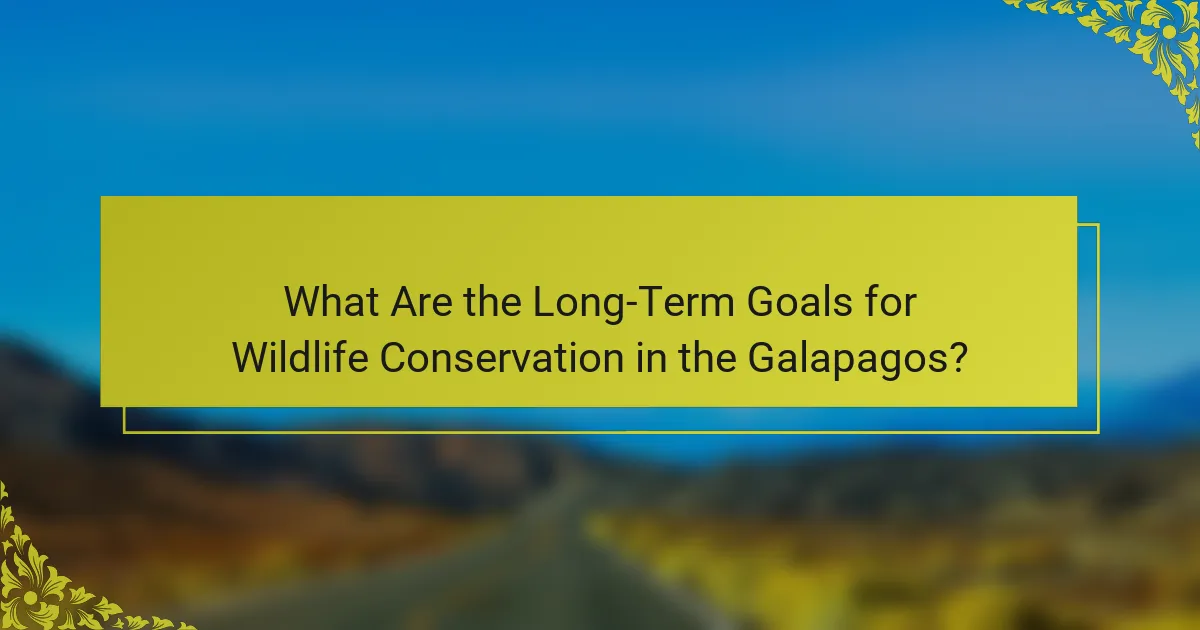
What Are the Long-Term Goals for Wildlife Conservation in the Galapagos?
The long-term goals for wildlife conservation in the Galapagos focus on preserving biodiversity and restoring ecosystems. Key objectives include establishing protected areas, enhancing species recovery programs, and promoting sustainable tourism practices. These efforts aim to mitigate threats from invasive species and climate change. Collaborative initiatives with local communities and international organizations are essential for achieving these goals. Monitoring and research will support adaptive management strategies to ensure the resilience of unique wildlife.
How Is Climate Change Affecting the Islands’ Ecosystem?
Climate change is significantly impacting the Galapagos Islands’ ecosystem by altering species distribution and threatening biodiversity. Rising sea temperatures affect marine life, leading to coral bleaching and reduced fish populations. Increased rainfall and changing weather patterns disrupt the delicate balance of terrestrial habitats, impacting unique wildlife such as the Galapagos tortoise and various endemic bird species. Conservation efforts are crucial to mitigate these effects and protect the islands’ unique biodiversity.
What Future Initiatives Are Planned for Protecting Biodiversity?
Future initiatives for protecting biodiversity in the Galapagos Islands include enhanced conservation programs, stricter regulations on invasive species, and community engagement projects. These efforts aim to preserve unique wildlife and habitats. The Galapagos National Park plans to expand marine protected areas, focusing on critical ecosystems. Collaborative research with international organizations will address climate change impacts. Educational campaigns will raise awareness about biodiversity’s importance, fostering local stewardship. These initiatives reflect a commitment to maintaining the islands’ ecological integrity for future generations.
What Can Travelers Do to Support Conservation Efforts?
Travelers can support conservation efforts in the Galapagos Islands by participating in eco-tours, volunteering for local projects, and donating to conservation organizations. Engaging with local communities helps promote sustainable practices. Travelers can also adhere to strict guidelines to minimize their environmental impact. These actions contribute to protecting the unique wildlife and fragile ecosystems of the islands.
What Common Mistakes Should Visitors Avoid When Engaging with Wildlife?
Visitors should avoid disturbing wildlife, feeding animals, and straying from designated paths. These actions can harm ecosystems and compromise conservation efforts. Respecting wildlife boundaries ensures a sustainable experience in the Galapagos Islands. Additionally, using flash photography can stress animals, so it’s best to observe quietly. Always follow guidelines from park authorities to protect unique species and their habitats.
